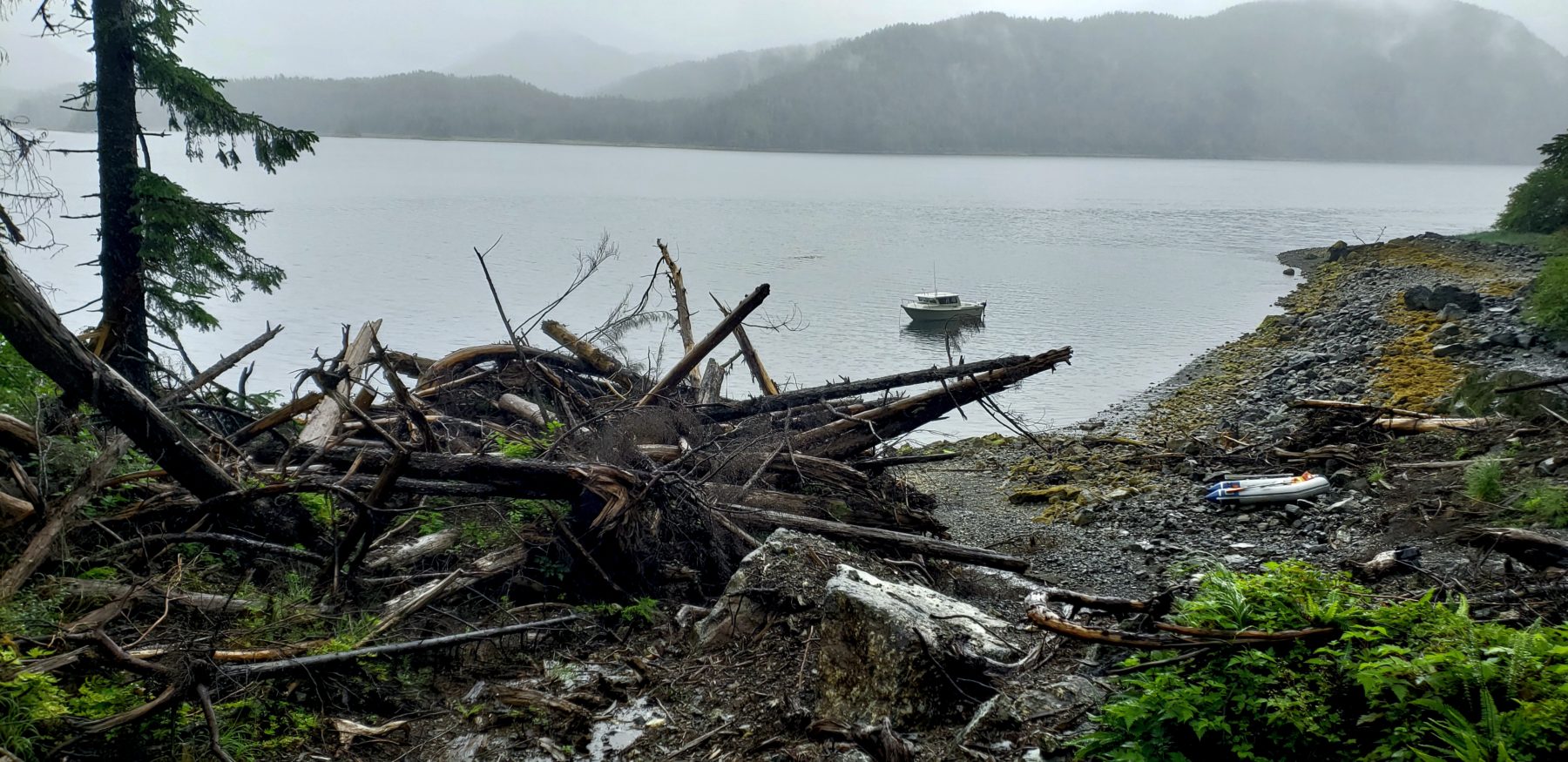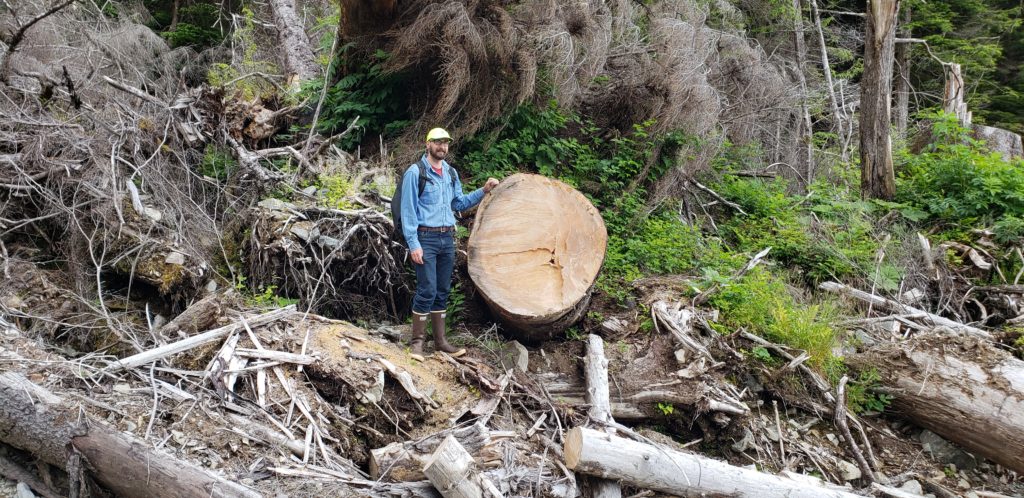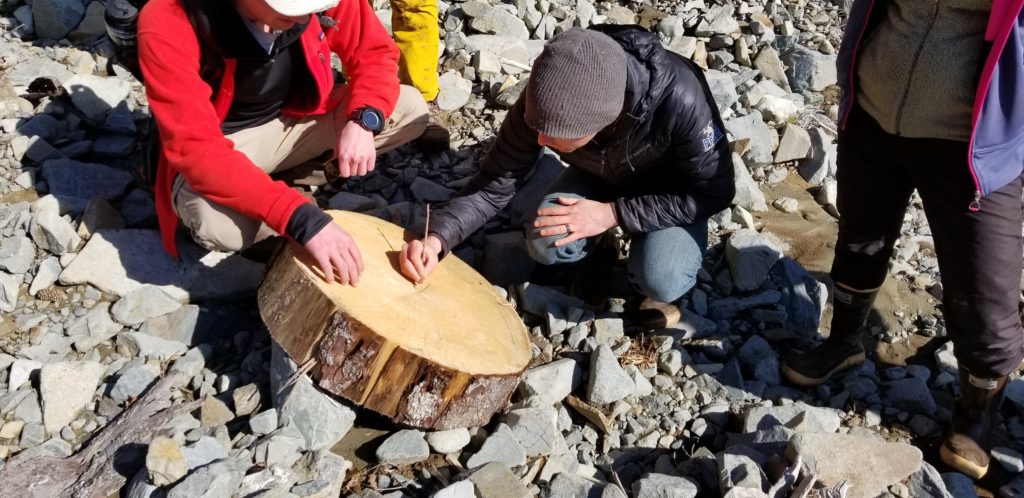
Overview
The Ecosystem Dynamics research, funded by the National Science Foundation (NSF), investigates the relationship between landslides and sequestered carbon in the Tongass National Forest. This collaborative research is led by Dr. Adam Booth, Professor in the Department of Geology at Portland State University, and Dr. Brian Buma, Professor in the Department of Integrative Biology at the University of Colorado Denver.
Landslide Studies
The Tongass National Forest in Alaska holds an incredible amount of the world’s forest carbon, approximately 8% of total forest carbon in the lower 48, and 0.25% of global forest carbon ( Leighty et al., 2006). Above-ground carbon may be found in large trees that can be picked up by landslides and transported long distances. Dr. Booth is using fieldwork, physics-based computer simulations, and landslide susceptibility maps to understand how these carbon packed logs affect landslide runout. Check out this interview with Dr. Booth and two Portland State University students from his 2018 field campaign in Sitka, AK in which he goes into depth about the importance of his work.

Ecology Studies
Over long periods of time, disturbances like landslides can either help build up carbon or remove carbon in the rainforest. What science tells us so far is that if there is not a high frequency of disturbances over long periods of time, carbon stocks will decrease. One hypothesis is that the largest carbon stocks in a given ecosystem will be in areas of moderate disturbance frequency (McLauchlan et al., 2014; Kranabetter et al., 2016). Dr. Buma is examining how Sitka’s disturbances (e.g. landslides, windstorms) impact carbon stocks in the Tongass.

Sources
Kranabetter, J. M., McLauchlan, K. K., Enders, S. K., Fraterrigo, J. M., Higuera, P. E., Morris, J. L., … & Gerhart, L. M. (2016). A framework to assess biogeochemical response to ecosystem disturbance using nutrient partitioning ratios. Ecosystems, 19(3), 387-395.
Leighty, W. W., Hamburg, S. P., & Caouette, J. (2006). Effects of management on carbon sequestration in forest biomass in southeast Alaska. Ecosystems, 9(7), 1051-1065.
McLauchlan, K. K et al . 2014. Reconstructing disturbances and their biogeochemical consequences over multiple timescales. BioScience. doi: 10.1093/biosci/bit017